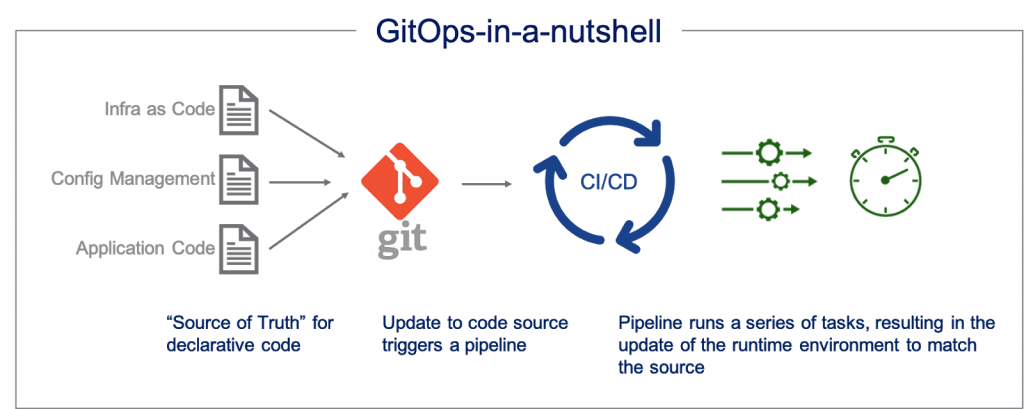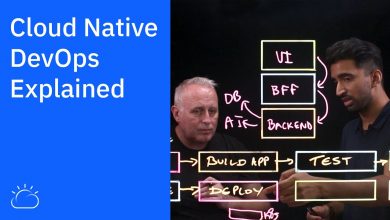GitOps Introduction – High Velocity Kubernetes
As VentureBeat describes enterprise DevOps teams are bypassing the plethora of management consoles required to manage their applications and instead doing so from within the code itself, through ‘GitOps’ automations.
As the term suggests it’s an approach based on using Git as the central, single source of truth for application development and deployment. There is a ‘source of truth’ for both your infrastructure and application code, allowing development teams to increase velocity and improve system reliability.
GitOps.tech offers this intro guide, where they state: “The fundamental idea of GitOps can be summarized as operations managed and performed in a declarative way with Git as the source-of-truth system.”
Your system configuration is defined and stored in a version control system, with the use of software agents to detect when this changes and automatically update the production environment to match it.

This approach brings many benefits:
- Your apps can be easily deployed and rolled back to and from Kubernetes. And even more importantly, when disaster strikes, your cluster’s infrastructure can also be dependably and quickly reproduced. This trivializes rollbacks; where you can use a `Git revert` to go back to your previous application state.
- When you use Git workflows to manage your cluster, you automatically gain a convenient audit log of all cluster changes outside of Kubernetes. An audit trail of who did what, and when to your cluster can be used to meet SOC 2 compliance and ensure stability.
- Continuous deployment automation with an integrated feedback control loop speeds up Mean Time to Deployment. Your team can ship 30-100 times more changes per day, increasing overall development output 2-3 times.
Your system configuration is defined and stored in a version control system, with the use of software agents to detect when this changes and automatically update the production environment to match it.
High Velocity Kubernetes
There is a ‘single source of truth’ for both your infrastructure and application code, allowing development teams to increase velocity and improve system reliability and achieve High velocity CICD for Kubernetes, described in this presentation.
“When we say “high velocity” we mean that every product team can safely ship updates many times a day — deploy instantly, observe the results in real time, and use this feedback to roll forward or back. The goal is for product teams to use continuous experimentation to improve the customer experience as fast as possible.
We recommend that you use the operator pattern to listen for and orchestrate service deployments to your Kubernetes cluster. This approach is described by William Denniss in slides 15-21 of our Kubecon presentation (video, slides). Using the operator, an agent can act on behalf of the cluster to listen to events relating to custom resource changes and apply them consistently. In other words the operator performs reconciliation between Git and the cluster.”




